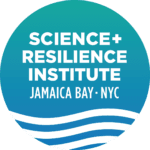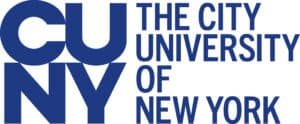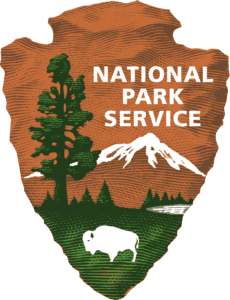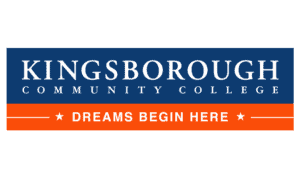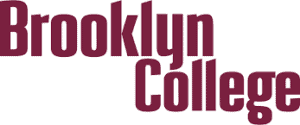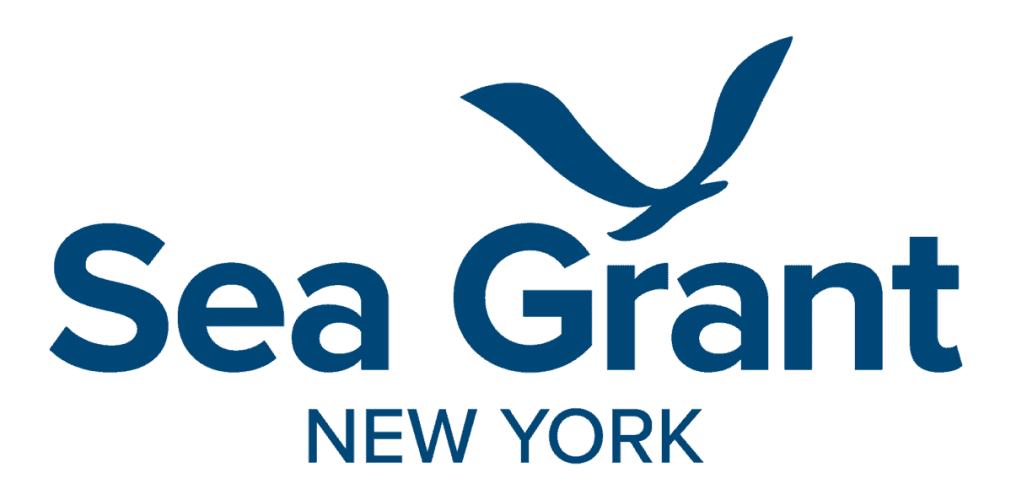At the Institute, we believe that one of the best ways we can add value to the multifaceted conversations around the Bay is to bring new voices to the table. Whether its long-time advocates with a rich history of working on issues in the Bay or nearby residents who are less familiar with the incredible resource in their backyard, our range of programs aim to create a richer conversation about the issues and priorities that matter most to Jamaica Bay communities.
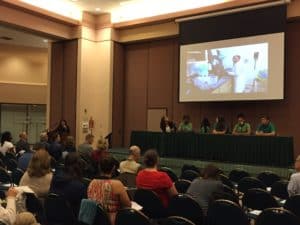 Through our events and programs, we invite the public to participate in the conversation with top-tier scientists, community-based leaders, and public agency officials. This October, commemorating five years since Superstorm Sandy, we co-organized a three-part program titled NYC’s Coastal Future: What Can Jamaica Bay Be? in partnership with the NYC Urban Field Station and the Jamaica Bay Rockaway Parks Conservancy as part of the Science of the Living City program. Turning a standard seminar format on its head, we designed a program that included an eclectic line up of speakers, augmented by a “Bay Café” with tables by NGOs and artists, youth rap videos, underwater photography and students from the Rockaway Waterfront Alliance’s Environmentors program. Set at the beautiful Rotunda at Kingsborough Community College overlooking the water, over 100 attendees participated in the events. To measure whether the audience made new connections by attending the events, we asked them each to name at least two initiatives or activities going on in the Bay that they were previously unaware. Nearly all attendees did.
Through our events and programs, we invite the public to participate in the conversation with top-tier scientists, community-based leaders, and public agency officials. This October, commemorating five years since Superstorm Sandy, we co-organized a three-part program titled NYC’s Coastal Future: What Can Jamaica Bay Be? in partnership with the NYC Urban Field Station and the Jamaica Bay Rockaway Parks Conservancy as part of the Science of the Living City program. Turning a standard seminar format on its head, we designed a program that included an eclectic line up of speakers, augmented by a “Bay Café” with tables by NGOs and artists, youth rap videos, underwater photography and students from the Rockaway Waterfront Alliance’s Environmentors program. Set at the beautiful Rotunda at Kingsborough Community College overlooking the water, over 100 attendees participated in the events. To measure whether the audience made new connections by attending the events, we asked them each to name at least two initiatives or activities going on in the Bay that they were previously unaware. Nearly all attendees did.
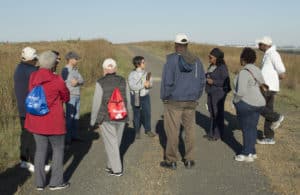 Projects by our 2017 summer fellows also allowed for deepening community connections around the Bay. As an artist at CUNY’s Master of Arts in Liberal Studies program, Bibi Calderaro’s experiential walks with residents of Canarsie and East New York allowed participants to experience Jamaica Bay in ways they hadn’t before: through a guided experience atop the capped and closed Fountain Avenue landfill. Participants were also able to have direct, open conversations with DEP’s John McLaughlin, who was able to provide a rich history and future outlook for the landfill. Pursuing a PhD in Environmental Psychology at the CUNY Graduate Center, Matt Devine’s research into community gardens in Arverne and Edgemere exposed the important, but potentially overlooked, role that these community fixtures have in creating resilient communities. We look forward to seeing his work develop around this network of important stewards.
Projects by our 2017 summer fellows also allowed for deepening community connections around the Bay. As an artist at CUNY’s Master of Arts in Liberal Studies program, Bibi Calderaro’s experiential walks with residents of Canarsie and East New York allowed participants to experience Jamaica Bay in ways they hadn’t before: through a guided experience atop the capped and closed Fountain Avenue landfill. Participants were also able to have direct, open conversations with DEP’s John McLaughlin, who was able to provide a rich history and future outlook for the landfill. Pursuing a PhD in Environmental Psychology at the CUNY Graduate Center, Matt Devine’s research into community gardens in Arverne and Edgemere exposed the important, but potentially overlooked, role that these community fixtures have in creating resilient communities. We look forward to seeing his work develop around this network of important stewards.
Over the past year and half, our Climate Forum program has offered four events to date, engaging with 150 attendees in 25 communities on a range of weather and climate-related topics corresponding to the changing seasons. We’ve found that co-hosting them with community partners improves visibility and yields a more focused dialogue. For example, our partnership with the local CERT leader and community leader Harold Jones, on the topic of flooding in Canarsie, led to one of our most well-attended and positively received forums to date. Survey results revealed that attendees benefit most from the diverse expertise provided, information on localized risk coupled with emergency services, ability to discuss shared interests, and learning about the new resources and tools available.
Looking ahead to 2018, the next State of the Bay Symposium will soon take shape, and the R/V CUNY I, our new research vessel, is poised to play an important role in our future outreach activities. As we think about ways to continue to build new audiences for the Bay, we welcome your ideas about how to continue to develop programs that are impactful, engaging and fresh.
